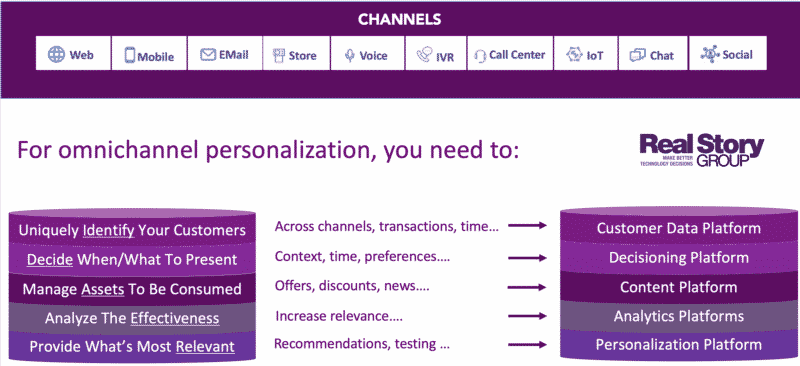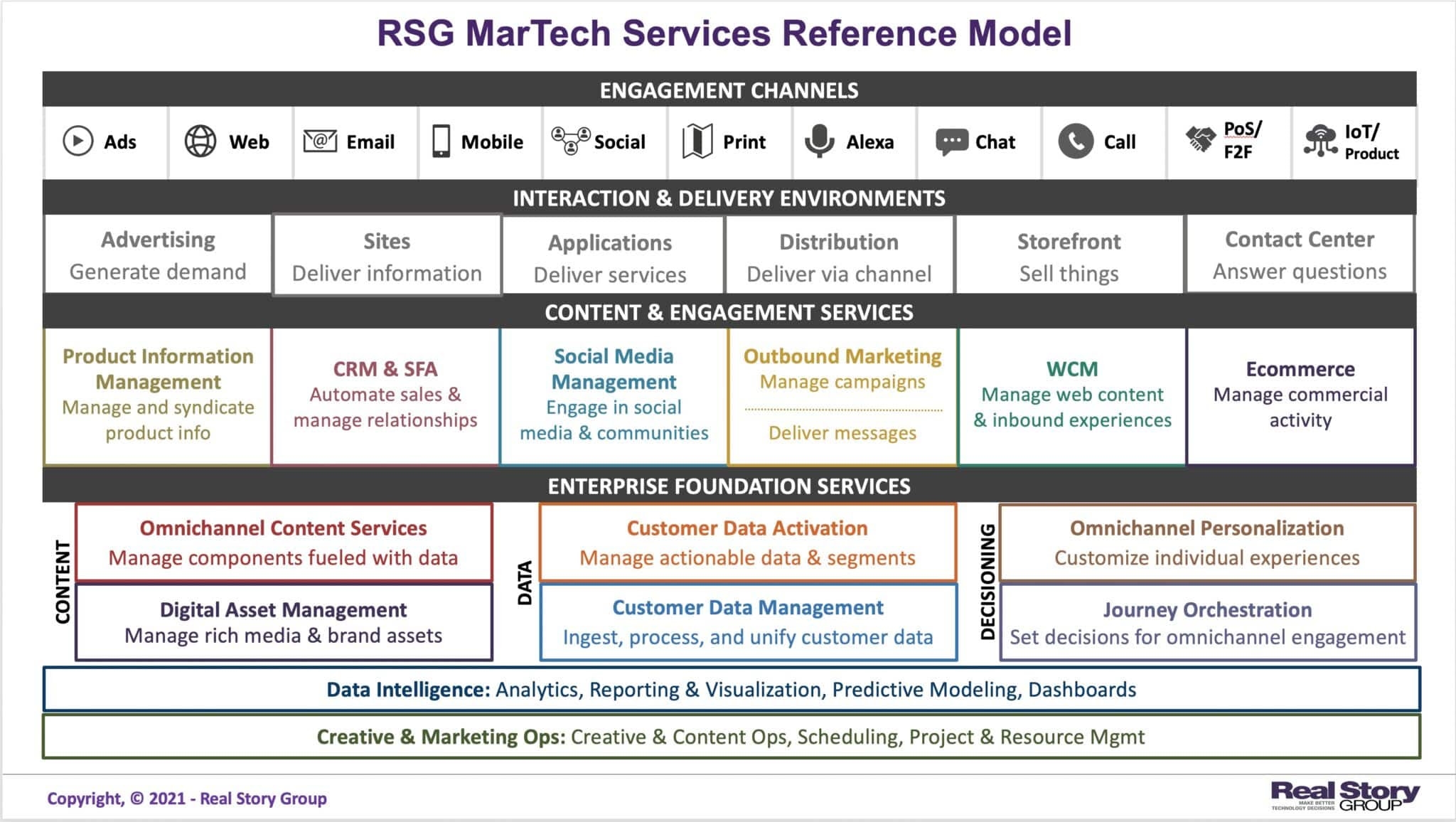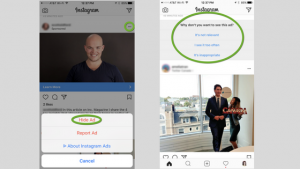Your personalization strategies will require several adjacent capabilities beyond simple targeting logic.
In part one of this three-part series, I explained different options regarding where to seat functional personalization capabilities in your overal marketing technology stack. In this follow-up, I’ll explore different platform components required for building a holistic personalization technology strategy. The key premise is that omnichannel personalization requires several related capabilities across a potentially wide range of use cases.
Unified customer data as table stakes
For successful personalization, you will need other enablers and indeed some prerequisites. Of the latter, unified customer data should become your first priority. And this means first grappling with the full lifecycle of customer data, which has at least five phases:
- Data Ingestion: You have to first ingest all kinds of data from zero-, 1st-, 2nd- and 3rd-party data sources. This data can be batch or real-time, may come in different formats and via diverse ingestion mechanisms — but not matter what, first you have to successfully source it.
- Data and Profile Management: Once you collect and ingest data from different sources, the next step takes it through basic management tasks such as cleansing, de-duping, normalizing and so forth. Once normalized you need processes to stitch data together into unified user profiles. Without this, how are you going to know that M. Kelley and Masha Kelley are (or are not) the same person?
- Segmentation: Once you have unified profiles of all your prospects and customers, you can then segment them based on different attributes. The resulting segments and audiences provide the foundation for customizing different experiences for different groups.
- Analytics: These segments then form the basis for analytics and insights. You can run simple analytics, or you can run more sophisticated models, including predictive analytics via advanced machine learning techniques.
- Personalization: The final step in this data lifecycle is activation, or putting all this data and these segments to work. That means acting on your data to address experience personalization, product recommendations, or related use cases.
There may be more stages depending on your situation, and the sequencing might vary. Moreover, the scope of a customer data platform (CDP) may vary across this lifecycle. To learn more about different architectural models for addressing customer data management, check out this recorded briefing.
Other prerequisites
Meanwhile, your personalization strategy will require several adjacent capabilities to work on that data. We’ve already covered customer identification, across channels and transactions, and over time. From there you need to:
- Decide what to present to customers, and when, based on context, behaviors, profiles, and preferences across channels and devices;
- Manage assets that underpin personalized experiences across multiple channels. Think content items, offers, news, discounts, and other assets; and
- Analyze the effectiveness of your work, to keep improving the relevance of your offerings
A holistic technology strategy
So as you can see, in terms of technology, these prerequisites map to specific technology components or layers. I won’t label this a “stack,” per se, but it’s a collection of services you need to mature and integrate as part of a holistic technology strategy to become truly effective. Let’s review the main pieces.
- Uniquely Identify Customers <-> Customer Data Platform: Uniquely identifying your customers requires consolidating data from various sources, resolving identities and associating disparate transactions to unified user profiles. This roughly maps to Customer Data Platforms and —as discussed earlier — other components in your customer data fabric, such as underlying data warehouses and lakes.
- Decide When/What to Present <-> Decisioning Services: The ability to create and manage rules or other decision logic, such as sending a particular message at a particular journey point, or showing a specific offer based on session context. Journey Orchestration and Customer Journey Management platforms can begin to enable this sort of decisioning, even if both market segments remain somewhat immature.
- Manage Assets <-> Content Platform: Manage and distribute content and digital assets such as micro-content, images, offers, campaign content, and other types of content fragments. Omnichannel Content Platforms and (in a more limited way) Digital Asset Management systems can help you do this.
- Analyze the Effectiveness <-> Analytics Ecosystem: Note the plural; you may need several types of platforms to glean the right insights and build more meaningful models, including potentially predictive ones.
- Give Them What Is Relevant <-> Personalization Service: Finally, taking the required relevant action will require you to be able to offer relevant content and experiences, as well as product recommendations.

Think of the these components as distinct services, though not always marketplaces, since some packaged platforms will cover more than one service. For example, it might be possible for your CDP to also provide light personalization or orchestration capabilities. But regardless of whether you deploy one or multiple platforms, they remain distinct services, and you’ll need both a business and technology strategy around each.
The other concept that’s implied here is that you can (and should) abstract these capabilities from your engagement tier so that you can run them as omnichannel services. This becomes particularly important with respect to your personalization strategies, where customers quite naturally assume you will address their specific needs across all touchpoints, and not, for example, send them an offer in email that your website doesn’t recognize.

Personalization components as part of your larger omnichannel stack. Source: RSG
What you should do
Personalization in an omnichannel world is no longer a single module you can drop into a customer experience environment. Moreover, you can’t just license a personalization platform and hope it will magically improve your customer experience. Your personalization strategies will require several adjacent capabilities beyond simple targeting logic, especially those that relate to granular management of data and content.
Therefore, when considering personalization initiatives, you should take a holistic view and remember that several technology components need to work with each other as part of a coherent stack.
Real Story on MarTech is presented through a partnership between MarTech and Real Story Group, a vendor-agnostic research and advisory organization that helps enterprises make better marketing technology stack and platform selection decisions.
The post The Real Story on MarTech: A holistic personalization technology strategy appeared first on MarTech.
(59)
Report Post








